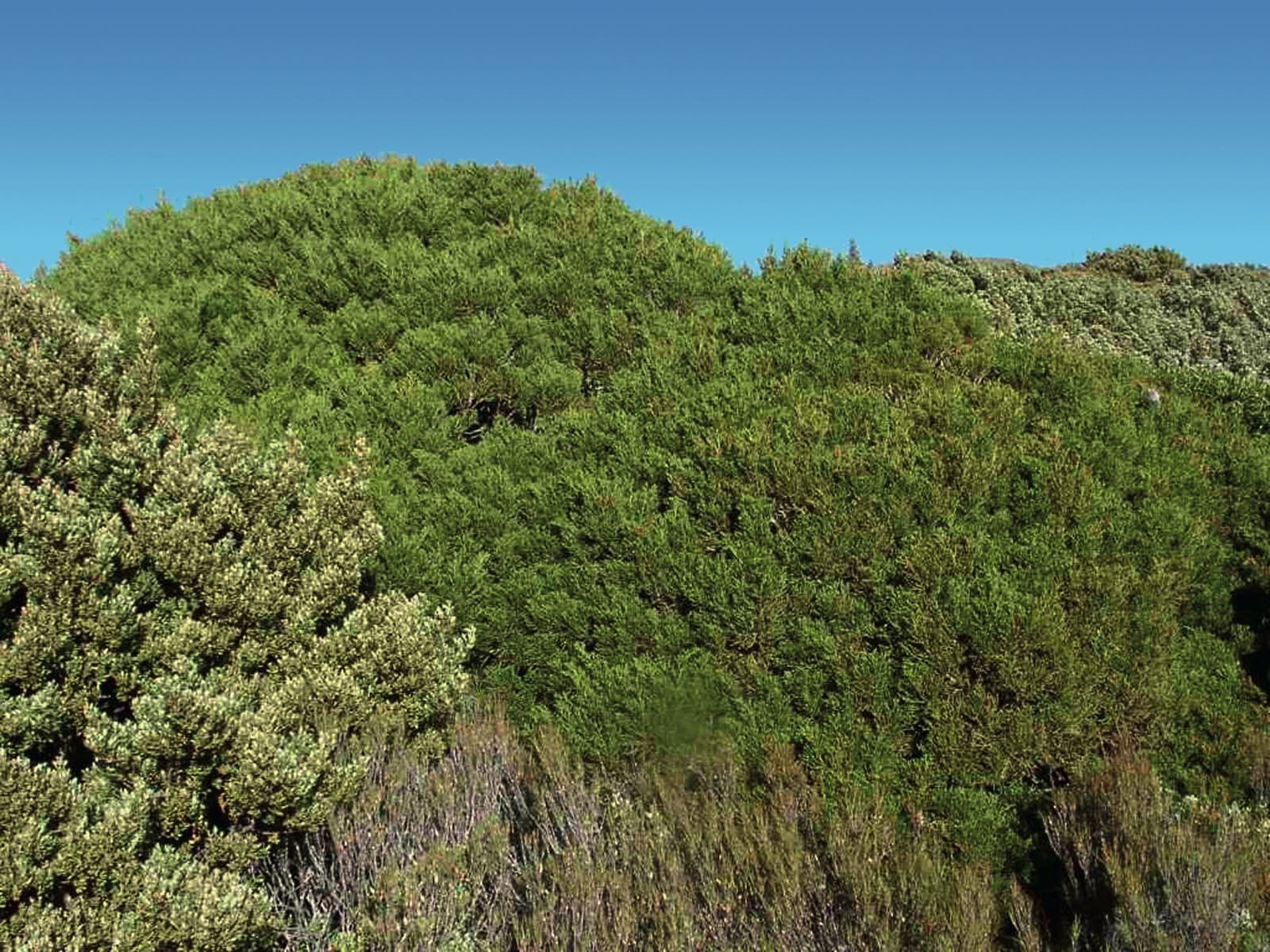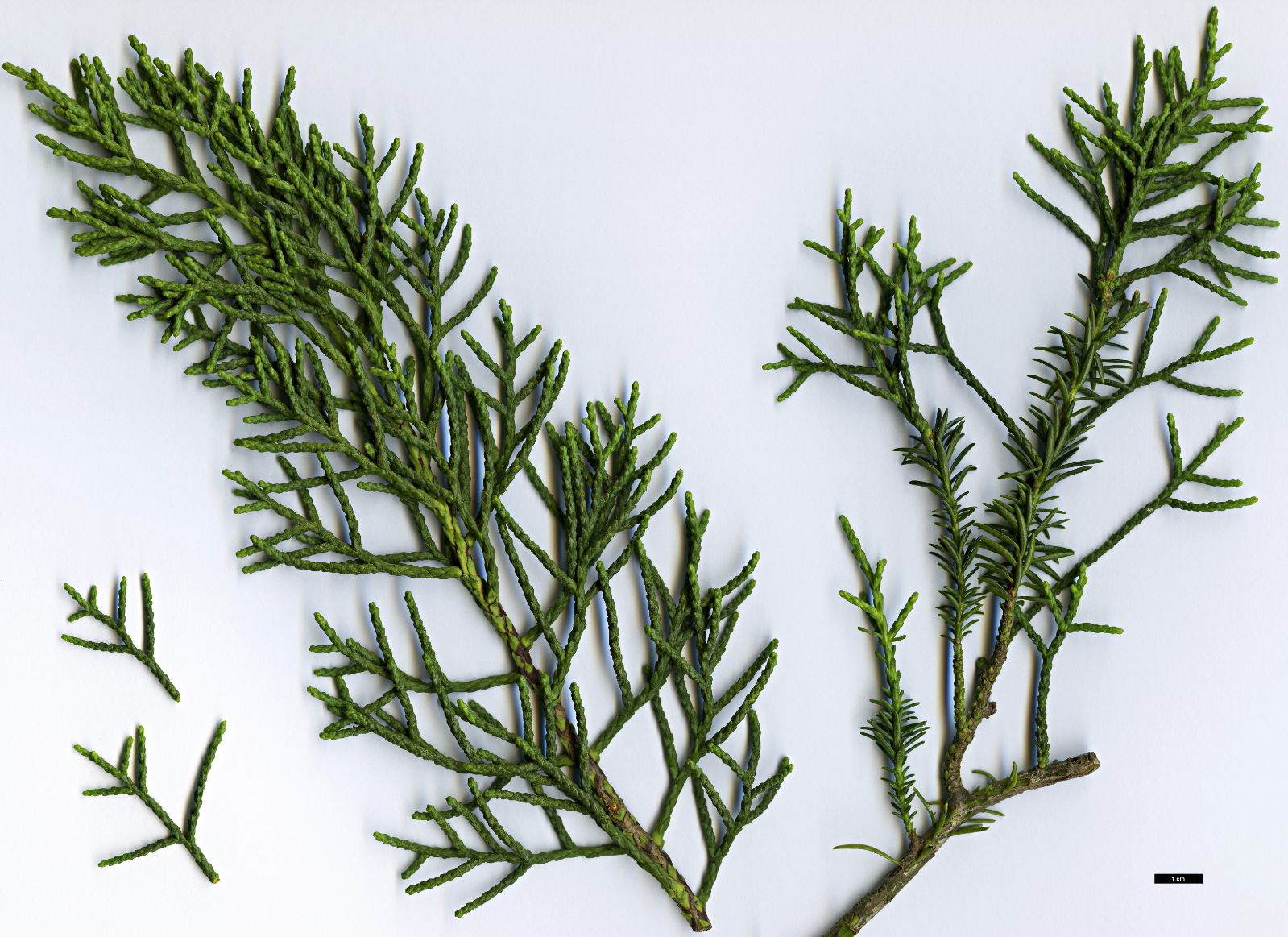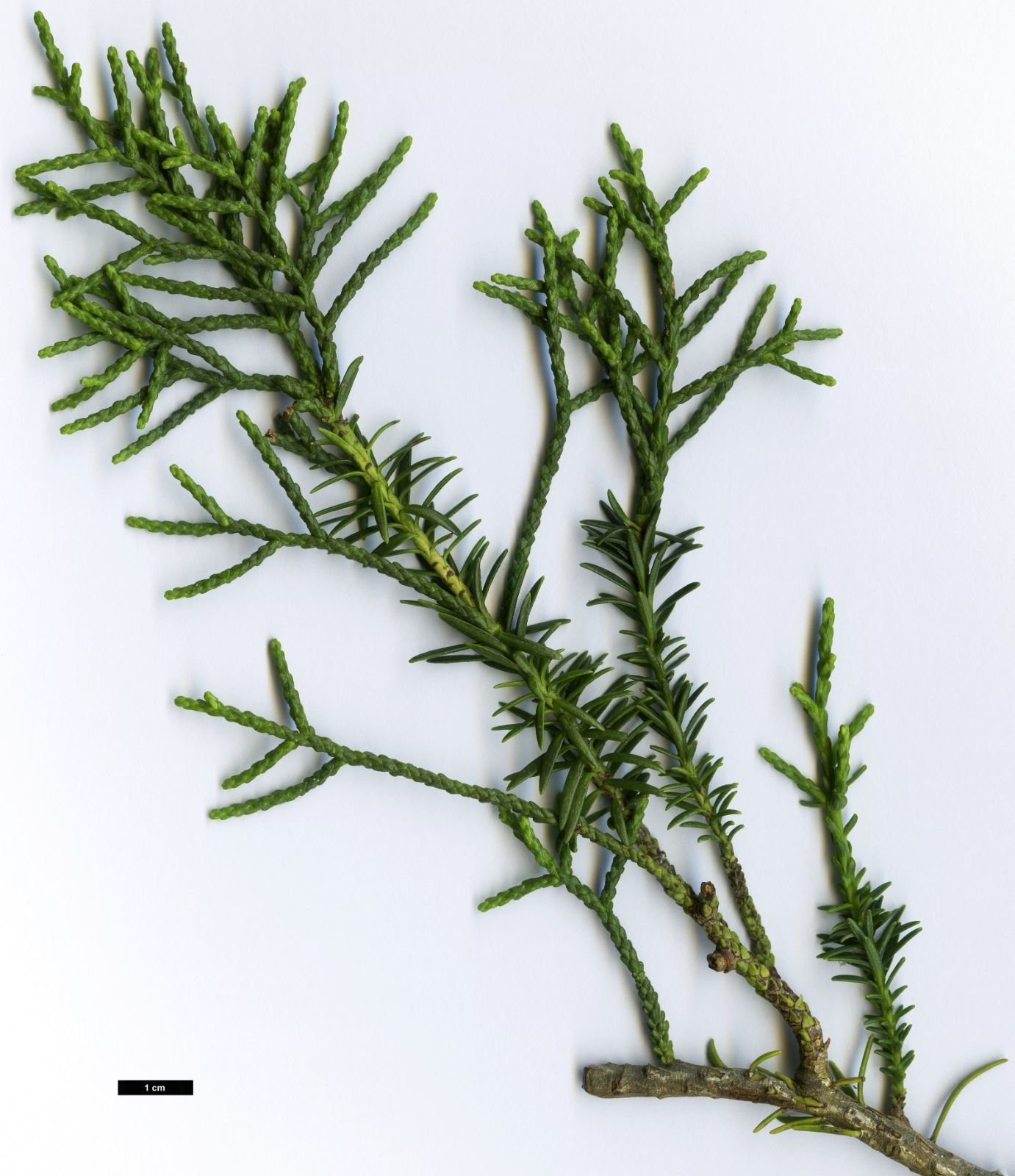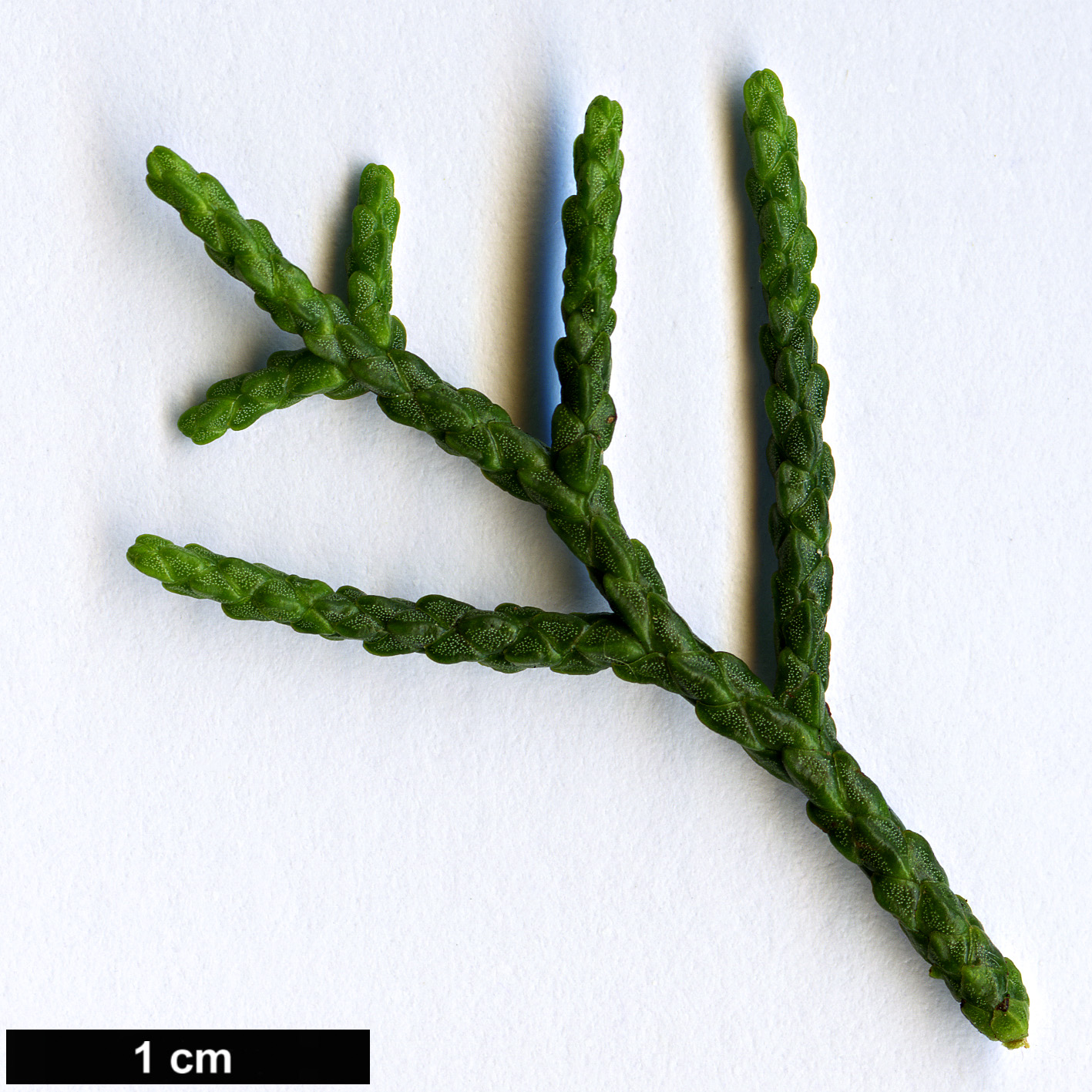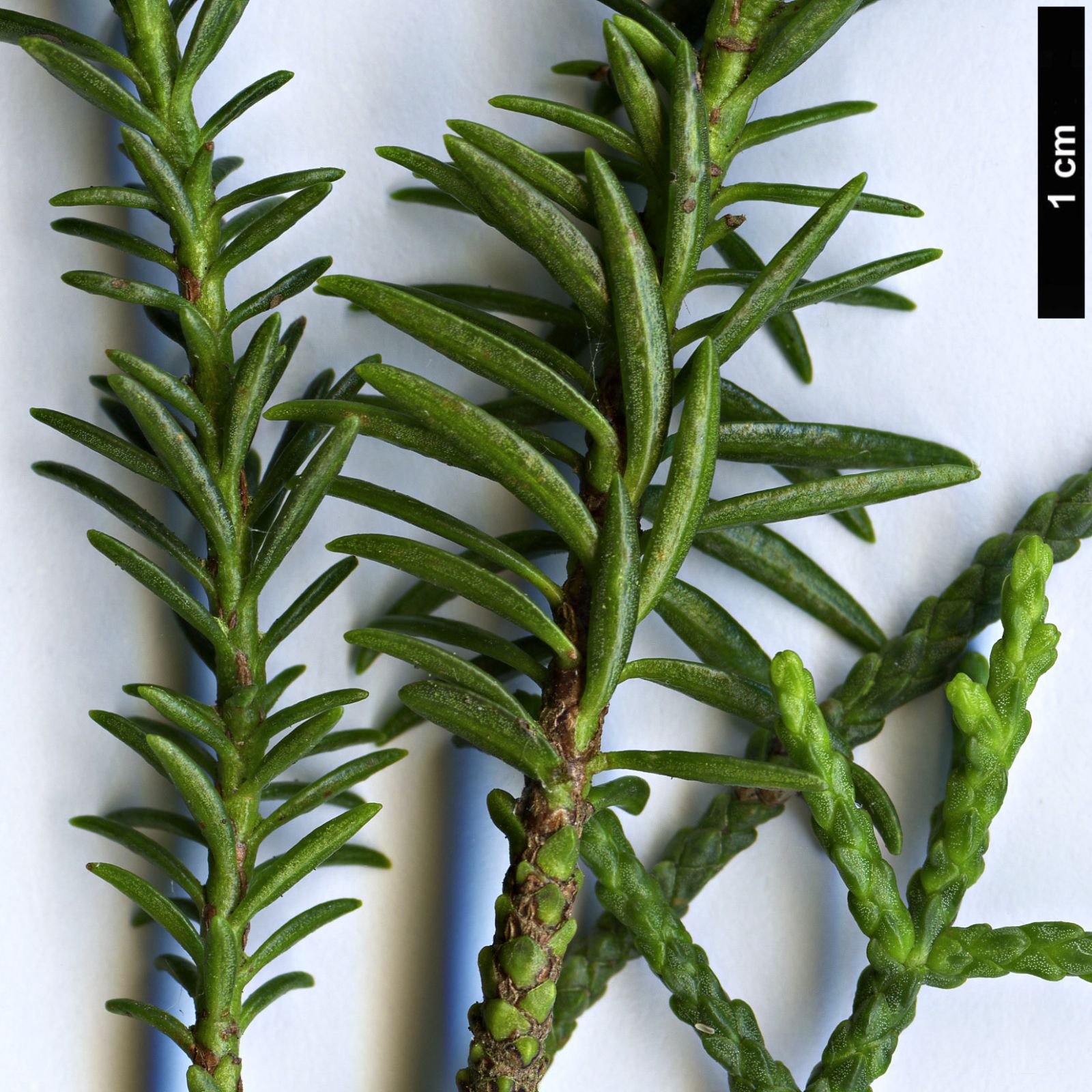Halocarpus biformis
Credits
Article from New Trees by John Grimshaw & Ross Bayton
Recommended citation
'Halocarpus biformis' from the website Trees and Shrubs Online (treesandshrubsonline.
Genus
Synonyms
- Dacrydium biforme (Hooker) Pilger
Small tree to 10 m, 60 cm dbh. Bark silver-grey, peeling in small flakes, exposing a reddish brown inner layer. Branches stout, spreading, to make a rounded crown; in exposed sites it forms a compact shrub; branchlets 3–4 mm diameter, quadrangular. Juvenile leaves spreading, linear, 1–2 × 0.15–0.3 cm, narrowed into a short, twisted petiole, midvein usually distinct. Mature leaves scale-like, densely imbricate, appressed to the stem, 2 mm long, blunt, very thick with translucent margins, prominently keeled. Male strobili solitary, c.4 mm long, at the tips of branchlets. Female cones solitary or paired. Seeds 2–3 mm with orange aril, produced rather irregularly. Allan 1961, Salmon 1996. Distribution NEW ZEALAND: North Is., South Is., Stewart Is. Habitat Forests and scrub above the treeline, between 0 and 1400 m asl. USDA Hardiness Zone 8–9. Conservation status Lower Risk. Illustration Van Gelderen & van Hoey Smith 1996; NT387, NT445.
Halocarpus biformis is well named, as the transition from juvenile to adult growth can be very abrupt on a single shoot (see Figure 50, p. 445) – although tufts of juvenile growth can appear even on an otherwise fully mature specimen. In the wild it forms a compact small tree, with very dense wood, but in cultivation in the northern hemisphere it is as yet only a small shrub. Jan De Langhe has recorded it at Jardin botanique de la Roche Fauconnière, Cherbourg, France, and at Trengwainton in Cornwall (J. De Langhe, pers. comm. 2007), but the only living specimen seen in the research for the current work grows at Tregrehan: a 1996 accession, 80 cm tall in 2005. The new growth on juvenile shoots is bright green.

